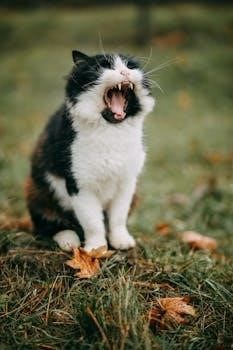Overview of “The Three Little Pigs” PDF Versions
“The Three Little Pigs” is a timeless tale, readily available in PDF format. These versions offer easy access to the story, often featuring illustrations, for convenient reading on various devices.
Availability of PDF versions online
The digital age has made accessing “The Three Little Pigs” easier than ever, with numerous PDF versions readily available online. Websites, digital libraries, and online bookstores often offer free downloads or purchasable versions of the story. These PDFs cater to diverse needs, from simple text-based versions perfect for easy reading to elaborately illustrated editions designed to captivate young audiences.
Platforms like DIGITAL LIBRARY SJKC CHEE CHUIN and personal blogs host these PDFs, ensuring wide accessibility. Many of these versions include interactive elements or activities to enhance the reading experience. The availability of these PDFs allows parents, educators, and children to enjoy this classic tale anytime, anywhere, promoting literacy and imagination. The ease of access makes it a valuable resource for both home and educational settings.
Different publishers and sources offering the PDF
The PDF versions of “The Three Little Pigs” are available from a variety of publishers and sources, each offering unique editions of the classic tale. Educational websites, such as Core Knowledge Foundation, often provide PDFs designed for classroom use, complete with reading comprehension questions. Digital libraries and online bookstores feature versions from various publishers, catering to different age groups and reading levels.
Individual authors and illustrators also contribute to the availability of PDFs, offering their interpretations of the story. Platforms like DIGITAL LIBRARY SJKC CHEE CHUIN and personal blogs host these PDFs, ensuring a wide distribution. This diverse range of sources allows readers to choose versions that best suit their needs, whether it’s a simple retelling or an elaborately illustrated edition. The accessibility of these PDFs makes the story readily available to a global audience.
Story Elements in PDF Versions
PDF versions of “The Three Little Pigs” retain core story elements. Characters like the pigs and wolf, the houses of straw, sticks, and bricks, and the wolf’s attempts to enter, are central.
Characters⁚ Pigs and Wolf
The core characters in PDF versions of “The Three Little Pigs” are the three little pigs themselves, and the menacing big bad wolf. The pigs are typically portrayed as distinct individuals, each with their own personality and level of preparedness. The first pig, often carefree, builds his house of straw; the second, slightly more diligent, opts for sticks; and the third, the wisest, constructs a sturdy brick house.
The wolf serves as the antagonist, driven by hunger and a desire to devour the pigs. He’s characterized by his cunning and use of force, attempting to huff and puff his way into their homes. The contrast between the pigs’ varying levels of resourcefulness and the wolf’s persistence is a key element, highlighting themes of planning and hard work. PDF versions usually visually represent these characters to engage young readers.
House Materials⁚ Straw, Sticks, and Bricks
The houses built by the three little pigs, constructed of straw, sticks, and bricks, represent varying levels of preparation and resilience. In PDF versions of the story, these materials are often visually depicted to clearly differentiate the pigs’ choices; The straw house, built quickly, symbolizes laziness. The sticks, a slightly stronger choice, suggest more effort but still lack durability.
The brick house represents foresight and hard work, ultimately providing safety. The contrast between the vulnerability of straw and sticks versus the strength of bricks is a central theme. PDF illustrations emphasize these differences, showing the wolf easily destroying the first two houses while struggling against the brick one. These visual cues help children understand the importance of planning and diligence.
The Wolf’s Attempts to Enter
The wolf’s persistent attempts to enter the pigs’ houses are a key part of the narrative, found vividly illustrated in PDF versions of “The Three Little Pigs”. His iconic phrases, “Little pig, little pig, let me in!” and “I’ll huff and I’ll puff and I’ll blow your house down!”, become increasingly menacing as he targets each home; The PDF formats often use bold text or varying font sizes to emphasize these threats.
The wolf’s failure to breach the brick house highlights its strength, contrasting sharply with the easy destruction of the straw and stick houses. Some PDF versions add visual drama, showing the wolf’s frustration through exaggerated expressions and dynamic illustrations. His failed attempts to enter also create suspense, keeping young readers engaged. The final attempt down the chimney, and its foiled ending, provide a satisfying conclusion.

Educational Aspects in PDF Versions
PDF versions of “The Three Little Pigs” often include educational components. These include moral lessons, reading comprehension questions, and suitability for Pre-K and K3 instruction, enhancing learning.
Moral Lessons⁚ Hard Work and Planning
The story of “The Three Little Pigs” is a cornerstone of early childhood education, primarily because of the potent moral lessons it imparts, particularly the value of hard work and careful planning. The narrative contrasts the approaches of the three pigs in building their homes. The first two pigs prioritize ease and immediate gratification, constructing their houses from straw and sticks, respectively. This impulsivity leads to flimsy dwellings easily destroyed by the wolf.
In stark contrast, the third pig dedicates time and effort to build a sturdy house of bricks. This represents foresight and diligence. The brick house withstands the wolf’s attacks, highlighting the rewards of perseverance and strategic thinking. The story subtly teaches children that while shortcuts may seem appealing, long-term success requires dedication, preparation, and a commitment to quality. This enduring lesson resonates across generations, making it a valuable tool for parents and educators.
Reading Comprehension Questions in PDFs
Many PDF versions of “The Three Little Pigs” include reading comprehension questions designed to enhance a child’s understanding of the story. These questions typically target different levels of comprehension, from basic recall to more inferential thinking. Literal questions might ask about the characters’ names or the materials used to build the houses. Inferential questions could explore the pigs’ motivations or the wolf’s cunning strategies.
These questions are valuable tools for educators and parents to assess a child’s grasp of the narrative. They encourage active reading, prompting children to pay closer attention to details and draw conclusions based on the text. Some PDFs also include questions that encourage critical thinking, such as asking children to compare the pigs’ choices or predict what might happen if the third pig had also built a flimsy house. This interactive element transforms reading into a more engaging and educational experience.
Suitability for Pre-K and K3 Instruction
“The Three Little Pigs” is exceptionally well-suited for Pre-K and K3 instruction due to its simple plot, repetitive phrases, and clear moral lessons. The story’s straightforward narrative makes it easy for young children to follow, while the recurring phrases like “Little pig, little pig, let me in!” aid in memorization and language development.
PDF versions often include vibrant illustrations that capture children’s attention and enhance their understanding of the story’s events. Furthermore, many PDFs are designed with large, easy-to-read fonts, making them accessible to early readers. The story also provides opportunities to discuss important concepts such as hard work, planning, and safety. Worksheets and activities based on the story can further reinforce these lessons, making it a valuable resource for early childhood education. The story’s engaging nature and educational potential make it a staple in Pre-K and K3 classrooms.

Activities and Crafts Based on “The Three Little Pigs” PDF
PDFs inspire creative activities and crafts, like felt characters and house building. Worksheets and lesson plans extend learning, reinforcing the story’s themes for young learners.
Crafting with felt patterns
Bring the story of “The Three Little Pigs” to life through engaging felt crafts! Many online resources offer downloadable PDF felt patterns, perfect for creating adorable pig and wolf characters. These patterns often include detailed instructions and templates, simplifying the crafting process for both children and adults. Imagine crafting the three little pigs, each with their distinctive house, using colorful felt pieces.
These felt creations are excellent for storytelling, imaginative play, or even creating a charming mobile for a nursery. Felt is a versatile material, making it ideal for crafting projects with young children, as it’s easy to cut and glue. Using these patterns enhances fine motor skills, creativity, and provides a tangible connection to the beloved fairy tale. The completed felt figures serve as a reminder of the importance of hard work.
Worksheets and lesson plans
Enhance learning with “The Three Little Pigs” PDF through readily available worksheets and lesson plans. Many educational websites offer free, downloadable resources designed to complement the story. These materials often include activities focusing on reading comprehension, sequencing events, character analysis, and moral lessons. Worksheets may feature exercises like fill-in-the-blanks, matching games, and drawing prompts.
Lesson plans provide structured guidance for teachers, incorporating various activities, such as storytelling, discussions, and creative projects. These plans often cater to different age groups and learning styles, making it easier to adapt the material to specific classroom needs. Utilizing these resources helps children engage with the story on a deeper level, reinforcing key concepts and promoting literacy skills. They are a valuable tool.

Availability of “The Three Little Pigs” PDF in Libraries
Many libraries, like Interlochen Public Library, offer “The Three Little Pigs” in PDF format. This provides free access to the story, promoting literacy and community engagement.
Interlochen Public Library
The Interlochen Public Library provides access to various resources, including “The Three Little Pigs” in PDF format. Located at 9411 Tenth Street, Interlochen, MI, the library offers this classic tale and many others.
You can visit them during their operating hours⁚ Monday and Tuesday from 9 am to 5 pm, Wednesday and Thursday from 9 am to 7 pm, and Friday and Saturday from 9 am to 5 pm. For inquiries, contact them at 231-276-6767. The library supports literacy by providing accessible children’s literature.
By making resources like the “The Three Little Pigs” PDF available, they help to foster a love of reading in the community.

Foreign Language Versions and Adaptations
“The Three Little Pigs” is adapted into various languages, broadening its reach. These adaptations enable children worldwide to enjoy the story in their native tongues, fostering global literacy.
“The Three Little Pigs” in other languages
The enduring appeal of “The Three Little Pigs” has led to its translation and adaptation into numerous languages worldwide. This allows children from diverse cultural backgrounds to access and enjoy this classic tale. Finding “The Three Little Pigs” in languages like Spanish, French, German, and many others is quite common. These translated versions often retain the original story’s core elements, including the characters, plot, and moral lessons. However, they might incorporate cultural nuances or adaptations to resonate better with local audiences.
These foreign language versions are valuable resources for language learners and educators. They provide engaging material that can help students improve their reading comprehension, vocabulary, and cultural awareness. The availability of “The Three Little Pigs” in multiple languages underscores its universal appeal and its effectiveness as a tool for teaching important life lessons across cultures.
Adaptations for ELT (English Language Teaching)
“The Three Little Pigs” is frequently adapted for English Language Teaching (ELT) due to its simple plot, repetitive language, and engaging characters. ELT adaptations often simplify the vocabulary and sentence structures, making the story accessible to learners with limited English proficiency. These versions may also include interactive exercises, comprehension questions, and vocabulary activities to reinforce language learning.
The repetitive nature of phrases like “Little pig, little pig, let me in!” provides excellent opportunities for pronunciation practice and memorization. Furthermore, the story’s clear narrative structure supports the development of reading comprehension skills. ELT adaptations sometimes incorporate visual aids, such as illustrations or flashcards, to enhance understanding and engagement. By adapting “The Three Little Pigs,” educators can effectively use this classic tale to teach essential English language skills in a fun and meaningful context.